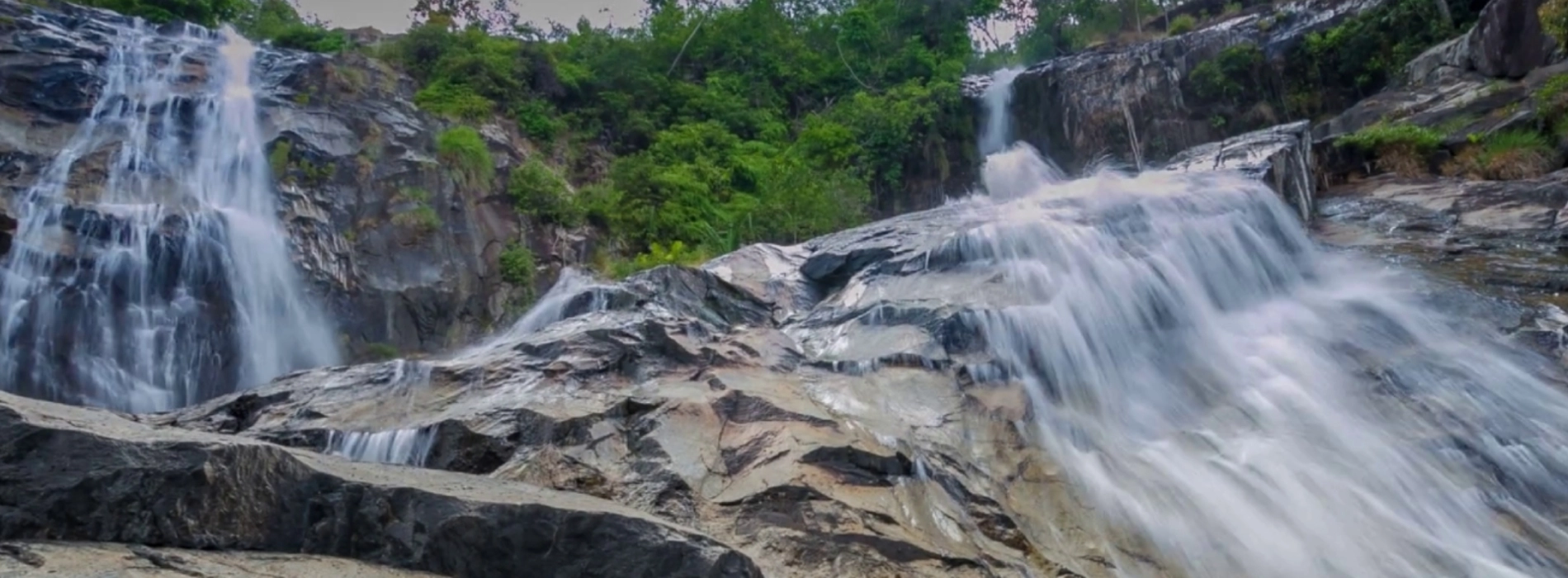Hala Bala Wildlife Sanctuary

Hala-Bala Wildlife Sanctuary, in Narathiwat province, is made up of two sectors: the Hala sector and the Bala sector. The Hala sector is mountainous and inaccessible, currently completely off-limits to visitors due to the violence in the area.
However, the Bala sector can be visited with caution, and a narrow road through the beautiful lowland forest here makes access easy.
The Bala sector of this Wildlife Sanctuary consists mainly of lowland forest on the border with Malaysia, making it just about the only place in Thailand where many lowland Sundaic species can be found.

Hala Bala Wildlife Sanctuary. (Source: Dom the Birder)
In addition to this, the forest is exceptionally beautiful with lots of mature trees and clear streams, and these, together with the remote location, give visitors a real sense of wilderness.
With a long and troubled history beginning with the Communist uprising in the late 1960’s through to the Islamic insurgency of the 80’s and early 90’s, the high mountains and dense forests of Hala-Bala Wildlife Sanctuary have long been a stronghold for rebels who sought to oppose the authority of the central government.
It was not until the early 1990s, after a long and drawn-out struggle against PULO and other terrorist groups, that a temporary peace was finally restored and the troubled region opened up to the outside world. In 1996, Hala-Bala was officially declared a Wildlife Sanctuary.

History of Hala Bala Wildlife Sanctuary. (Source: The Phuket Birder)
Read more: Thailand Island Hopping - West Coast
It’s extremely difficult to start talking about birding highlights; thus, probably the most standout group of birds here are the hornbills, probably some of the most memorable birds in the country.
Others, such as the fire-tufted Barbet, Giant Pitta, Garnet Pitta, Malaysian Rail Babbler, etc.—this is just a crumb of the groups when we’re talking about birdlife, one can find in this sanctuary.
In comparison to other national parks and wildlife sanctuaries throughout the country, Hala Bala ranks in the top ten for species recorded within it’s protected area. No wonder it is ranked as the best birdwatching site in all of southern Thailand!
This beautiful landscape is home to:

Highlights of Hala Bala Wildlife Sanctuary. (Source: ayuwat)
All that to say, finding birds in Hala Bala is not at all a problem. Practically anywhere one looks, there will be a bird or two peeking out from behind a bush or tree.
While most birders will no doubt spend a fair amount of time birding along the 11-kilometer stretch of road that cuts through the Bala wildlife sanctuary, there are a lot of other areas that are worth spending time looking into.
Much of the old forest in the area was cleared long before the land was declared a wildlife sanctuary, extirpating most of the forest-dwelling species from the area. However, there are a few interesting species that remain in the area; the blue-rumped parrot and the white-rumped shama are two birds that are found in the orchards and plantations located just outside the sanctuary.
.jpg)
Highlights of Hala Bala Wildlife Sanctuary. (Source: Tripadvisor)
The Research Station is divided into two levels. The Wildlife Research Station is situated on the top of the hill, and the Flora Research Station is located in the river valley.
The Wildlife Research Station is a great place to start the day, and most birders who are not already on the trails by 7 AM will find this place to be abundant in bird life as well.
Banded Broadbill and Black and Yellow Broadbill can both be heard calling low in the trees almost every day, and barbets, leafbirds, and woodpeckers can be seen buzzing about in the treetops.
The Rosie Apple trees in the back of the cafeteria are magnets for sunbirds, flowerpeckers, and spiderhunters, and the large dead trees often attract hornbills, which gather on the tallest branches to sunbathe on cold mornings.
The Flora Research Station is also abundant with birdlife, and the experimental garden plots attract many species of insectivorous birds. The tall trees that line the river valley are magnets for hornbills, of which Wreathed, Bushy Crested, Wrinkled, and White Crowned Hornbills are the most commonly observed.
This destination is best visited in the dry seasons (from November to April), which will offer more comfortable weather with less rainfall and a cooler atmosphere.
It will make your adventurous experience much more challenging and satisfying to explore the dense rainforest and engage in wildlife spotting.
_1.jpg)
Best time to visit Hala Bala Wildlife Sanctuary. (Source: Wikipedia)
From Haat Yai, follow Highway 43 past Pattani and Narathiwat. Near Narathiwat, switch to Highway 4084 heading towards Tak Bai and then to Highway 4057, which will take you to Sunghai Kolok.
After going through the town, head out towards the village of Waeng and the Bukita Border Checkpoint (Highway 4057). In Waeng, the directions get a little tricky as the highway signs have been removed, so you may need to ask for directions to Hala Bala (via Highway 4062) or Sirinthorn Waterfall (pronounced NAM-tok SI-rin-tawn in Thai).
On the map, you can see the township of Waeng located in the top middle of the map. Bala Wildlife Sanctuary is located directly where the Highway 4062 sign is placed on this map.